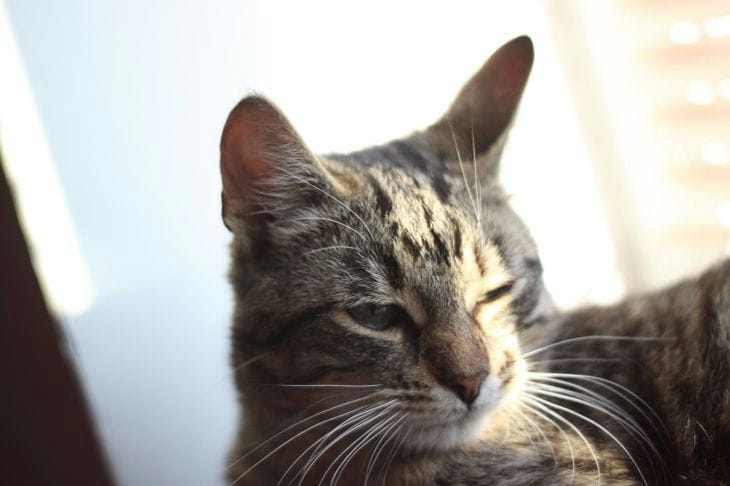Have you ever wondered why cats have those amazing whiskers on their faces?
These long, sensitive hairs seem like just a cute addition to the appearance of our furry pets.
But in fact, whiskers serve much more important functions for cats than just decoration.

Let's take a look into the cat world and figure out why these tactile organs are so important for our four-legged friends.
Ultra-sensitive sensors
First of all, cats' whiskers are highly specialized sensory organs, endowed with incredible sensitivity.
Each vibrissa hair has a huge number of nerve endings that instantly transmit information about touches and movements to the cat's brain.
Imagine feeling an object with your fingertips. Well, cats' whiskers work on roughly the same principle, only tens of times more finely and precisely.
They allow the cat to "see" the world around it literally with the tips of its whiskers, sensing the slightest changes in texture, movement and location of objects around it.
This hypersensitivity gives the cat enormous advantages. It can accurately determine the size and shape of objects, their position in space, direction and speed of movement - all this without relying solely on vision.
This is especially important for cats' hunting skills, allowing them to successfully spot, stalk and catch prey even in complete darkness.
Radar whiskers
In addition, cats' whiskers perform another vital function - they serve as a kind of "radar", helping the animal navigate in space and recognize obstacles.
Imagine you're moving down a narrow hallway in total darkness. You'd need some kind of "radar" to determine where the walls, doors, and other objects are, right? That's pretty much how cats' whiskers work.
These flexible whiskers constantly detect the slightest vibrations in the air, allowing the cat to "feel" the location of objects around it. They seem to probe the environment, warning the cat when approaching walls, corners or other obstacles. Thus, the whiskers serve as effective "distance sensors", helping the cat move smoothly and confidently, even in complete darkness.
This is especially valuable for cats, because they see well at night, but do not have the same excellent night vision as, for example, owls. Radar whiskers become an indispensable assistant, allowing them to move safely in the dark.
Hunting tools
In addition to sensory functions, cats' whiskers also play an important role in their hunting behavior. These sensitive hairs help the animals detect prey and hunt it successfully.
Imagine playing hide-and-seek with your furry friend. The cat narrows its eyes, stretches its whiskers forward, and begins to slowly creep up on you, as if sniffing the air. These movements are one of the key strategies of cat hunting.
Whiskers help the cat detect the slightest vibrations in the air caused by the movement of prey. They seem to "sense" the presence and location of the victim, directing the cat to it. In addition, whiskers also help the cat estimate the size and speed of potential prey in order to choose the best moment to attack.
Thus, these sensitive whiskers become an indispensable tool in the arsenal of cats' hunting skills. They help them to look out, pursue and catch various small animals and birds - the basis of the predators' diet.
Means of communication
Besides everything else, cats' whiskers perform another important function - they serve as a means of communication between these animals.
Each cat has a unique whisker pattern that allows other cats to recognize it.
Moreover, the position and movement of the whiskers convey important information to cats. Thus, raised, tense whiskers signal readiness to attack or aggression. On the contrary, relaxed, lowered whiskers indicate a calm, friendly mood.
Thus, whiskers become a kind of "language" of cats, allowing them to communicate with each other and express their emotional state.
This is especially important for street, wild cats, who are constantly in contact with their relatives and are forced to constantly defend their territory and place in the pack hierarchy.
Therefore, one should not underestimate the importance of these, at first glance, simple hairs on the face of cats.
Whiskers are complex, multifunctional organs that our furry friends simply couldn't survive in the wild without. They help them navigate, communicate, hunt, and ultimately thrive in the world around them.
So next time you're gently scratching your pet behind the ear, take a look at his long, sensitive whiskers. These simple-looking hairs are a true miracle of nature, and no cat can live without them.
Earlier we wrote about how to properly care for your cat's fur.








